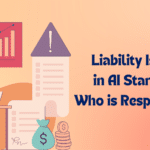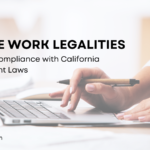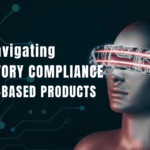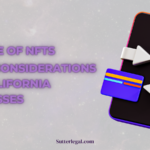Table of Contents
- What is a Benefit Corporation?
- How do I form a B Corporation?
- B Corporations for society
- B Corporation certification
- B Corporation Steps
- Conculsion
What is a Benefit Corporation?
Certified Benefit Corporations (“B Corporations”) are a new breed of business entity designed specifically for entrepreneurs who aim to make a positive social and environmental impact.
As stated on the B Corporation website, “Certified B Corporations are leaders in the global movement for an inclusive, equitable, and regenerative economy.
Whereas typical corporate structures require an entity to consider the impact of their decisions primarily on shareholders, certified B Corporations are legally required to consider the impact of their decisions on all of their stakeholders – an innovative model known as stakeholder governance.
The B Corporation legal framework allows companies to protect their mission and ensures that the company will continue to practice stakeholder governance throughout its lifecycle. The legal framework also provides more flexibility when evaluating potential liquidity and sale options.
How do I form a B Corporation?
The prestigious B Corporation label establishes that a business is meeting high standards of verified transparency, accountability, and performance on factors from employee benefits and charitable giving to sustainable supply chain practices and input materials.
In summary, in order to attain certification, a company must:
- Establish high social and environmental performance by achieving a B Impact Assessment score of 80 or above and passing B Lab’s risk review (“B Lab” is a nonprofit organization that certifies B Corporations). Multinational corporations must also meet baseline requirement standards.
- Make a legal commitment by changing their corporate bylaws or operating agreements to reflect accountability to all stakeholders just shareholders and achieve benefit corporation status if available in their jurisdiction.
- Exhibit transparency by allowing information about their performance measured against B Lab’s standards to be made publicly available in their B Corporation profile on B Lab’s website.
B Corporations for society
B Corporations are beneficial for society as a whole because they build trust with consumers, communities, and suppliers; entice and retain employees; and attract mission-aligned investors. B Corporations are required to undergo a verification process every three years, so they are by definition focused on long-term stability and development. Also, upon a change of control or Initial Public Offering (IPO), a B Corporation must update its impact assessment and verify its updated score.
B Corporation certification
is based on a holistic analysis and is not exclusively focused on any single factor. The process to achieve and maintain B Corporation certification is stringent and requires engaging multiple groups across your company. Taking company size and profile into account, verification involves documentation of your company’s business model and information about your structure, operations, and work processes, as well as a review of potential public complaints and possible onsite visits. Intermittent recertification confirms that these standards are met on an ongoing basis.
B Corporation Steps
While the certification process varies depending on your company’s size and complexity, all companies must do the following to become a B Corporation:
- Register for the free and confidential B Impact Assessment.
- Consult an attorney or use the Legal Requirement Tool online to determine how your company can integrate stakeholder consideration into your governance structure, which will depend on your location and corporate structure.
- Complete the Risk Review and baseline requirements for multinational corporations if applicable.
- Gather your supporting documentation and data, and get ready to record your answers.
- Take the B Impact Assessment online. You can save and return to your assessment at any time.
- Establish a company profile—you will be prompted once you fill out the majority of the Assessment—and start the Disclosure Questionnaire. At this point you will learn your baseline score; if it is under the 80-point benchmark, reevaluate and prioritize improvement areas.
- If you’re over the 80-point benchmark, submit your B Impact Assessment for review.
- You will next wait in the Evaluation Queue, as an analyst from B Lab assesses your company’s eligibility for B Corporation Certification.
- Once eligibility is determined, you enter the Evaluation phase. An analyst from B Lab Global will look over your company structure, any controversies, as well as your answers to the entire Assessment.
- You will then enter the Verification Queue, where you will be asked to provide information about your employees and any suppliers.
- During Verification, you will have your review call with an analyst, go through your verification report, and provide all documentation backing up your answers to the Assessment.
- If you meet the verified 80-point threshold, you’ll enter the Post-Verification stage and sign the B Corp Agreement.
- Upon successful completion of the above-mentioned steps, you have reached Certification. In order to meet the transparency requirement for B Corp Certification, you will need to publish your public profile in the B Corp Directory, including your company’s score and an impact report.
- Now it is time to Launch. Celebrate and share your B Corp status internally with employees, board members, and shareholders, and externally with suppliers, vendors, and the public.
- The final step in your B Corp journey will last the longest. You will prepare for recertification every three years, and use the B Impact Assessment and the certification process as a tool for continuous improvement.
Conculsion
If you want to start a B Corporation or convert your business entity into a B Corporation, contact the attorneys at Sutter Law today!






